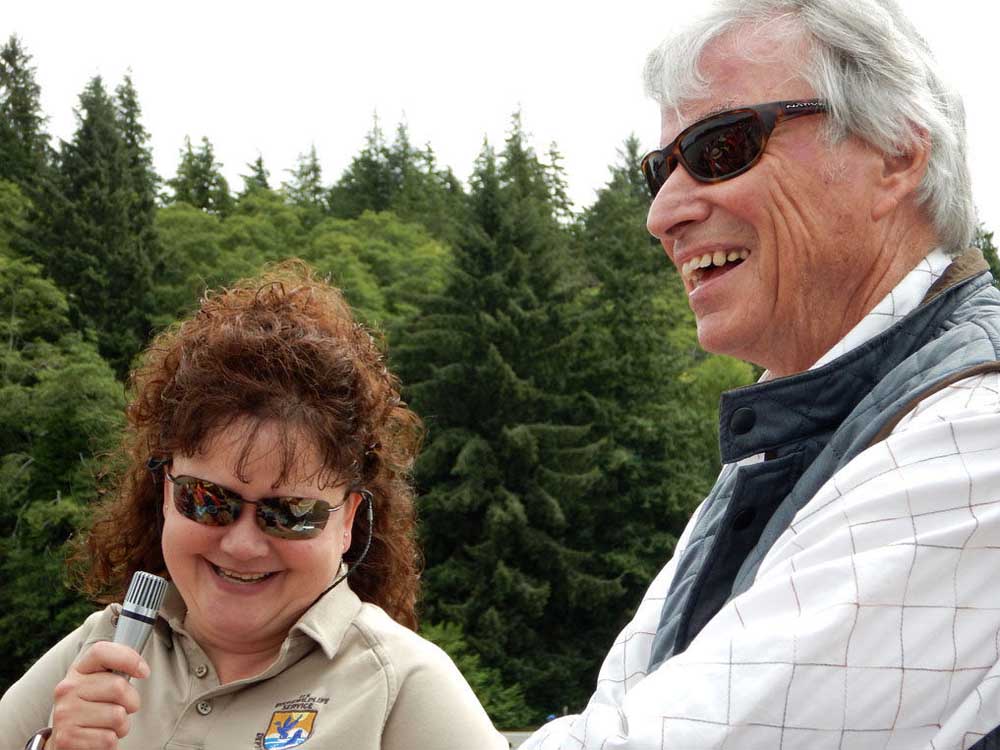Refuge friends make annual visit to sentinels of Long Island
Published 10:16 am Tuesday, July 25, 2017

- Refuge Manager Jackie Ferrier addressed tour participants during the brief barge trip across the Long Island channel. Retired U.S. Rep. Don Bonker, right, participated in the annual event.
LONG ISLAND — Somewhere near the center of south Long Island stand ancient cedars, sentinels and guardians of the forest. While individual trees come and go, the Cedar Grove has existed for the past 4,000 years, according to refuge managers. The Cedar Grove is 274 acres of sheer beauty — together, the cedars contribute long-term stability to wildlife habitat.
Trending
Long Island is the largest estuarine island on the U.S. Pacific Coast. It is rich in wildlife because of its wide diversity of habitats. It has damp coastal forest, salt grass tidal marshes, mudflats and sandy beaches. This 5,460-acre island is surrounded by Willapa Bay with its rich marine environment including oysters, salmon, crabs and clams.
Nature is rich and diverse on Long Island. It is home to river otter, black bear, raccoon, Roosevelt elk, black-tailed deer, rough-skinned newt, Pacific tree frog, bald eagle, pileated woodpecker, Pacific wren, Stellar’s jay and red-tailed Hawk. These are only a few of the wildlife species that live there.
The trail to the ancient cedars is named after former U.S. Rep. Don Bonker, who helped save the Long Island old-growth forest. He participated in last weekend’s annual tour, along with 100 lucky members of the Friends of the Willapa National Wildlife Refuge, starting with a barge trip across the narrow channel that separates the island from the mainland. The refuge donated time and personnel.
Trending
The tour provided more than views of stately giant trees. It generated a view of the future and thoughts of the past. Marbled murrlets have been recorded there. Are they still nesting in the old forest? What about the northern spotted owl? Could they still be found?
Red cedars of the past hold the dominant position in the forest, but hemlocks are co-dominant because they have a high rate of growth even though they experience higher mortality than red cedar. This truth is right before one’s eyes.
“Thank you to all,” a tour participant said. “It was a privilege to be able to experience the awesomeness of the sentinels. The grove is awe-inspiring and quiets the souls of all who go there. It was the trip of a lifetime!”









